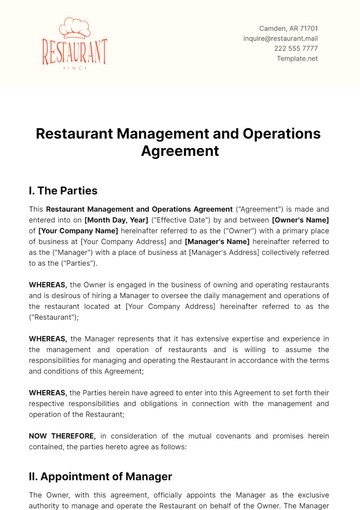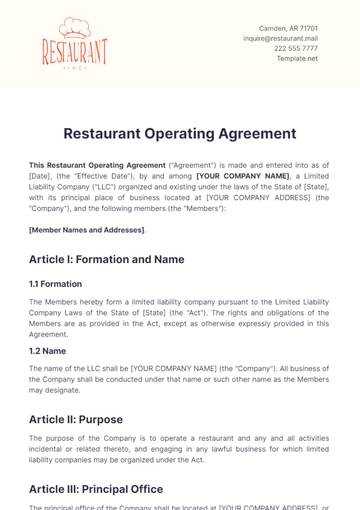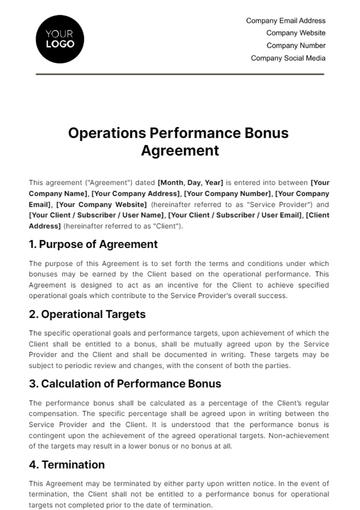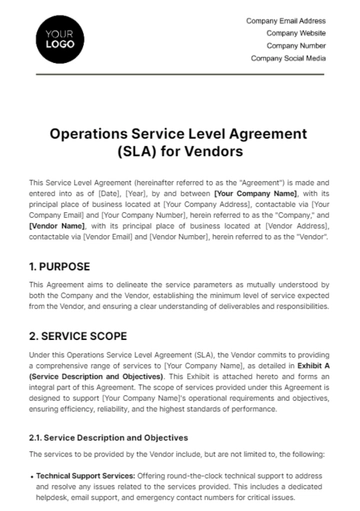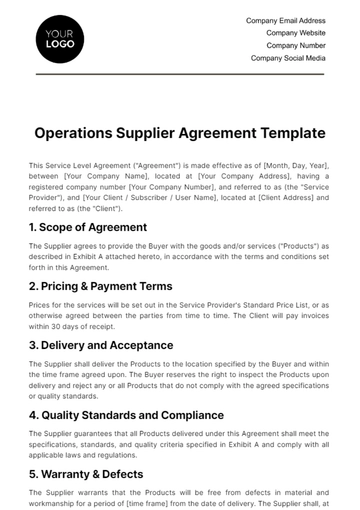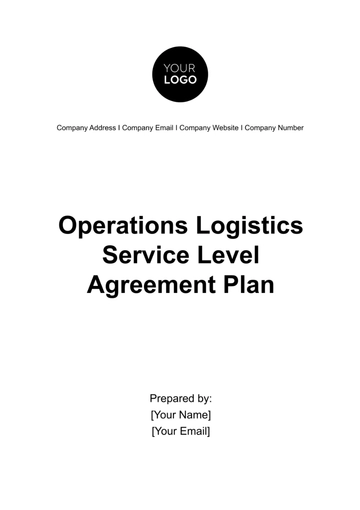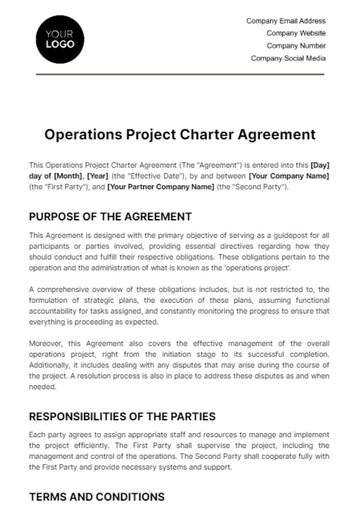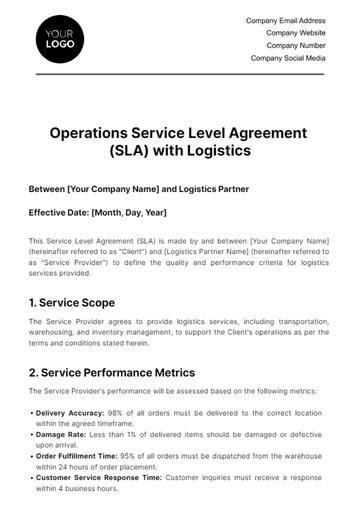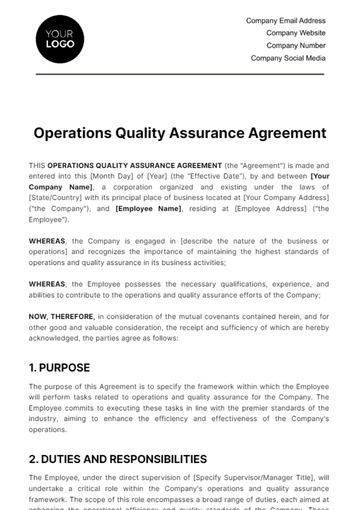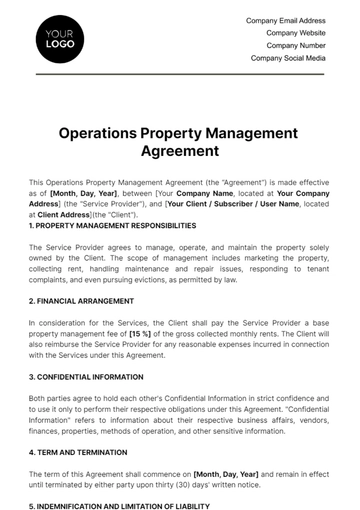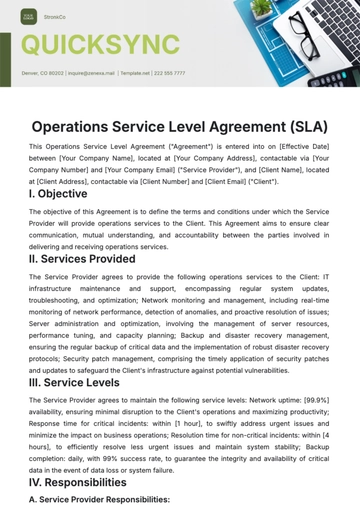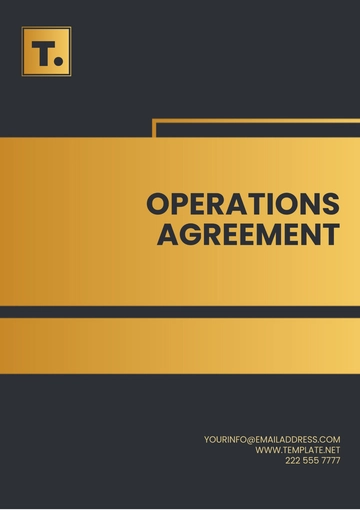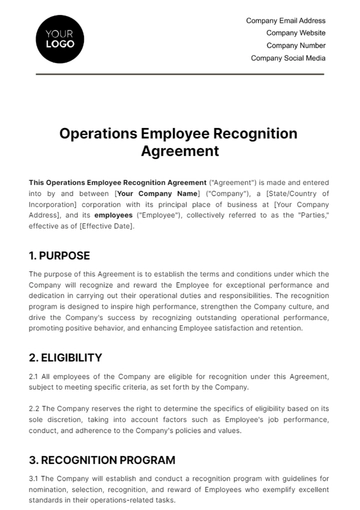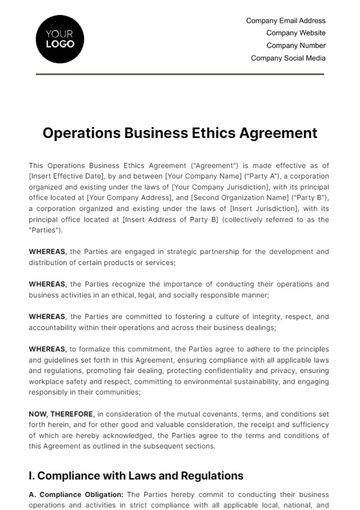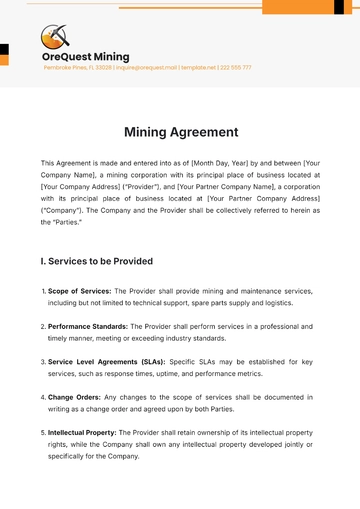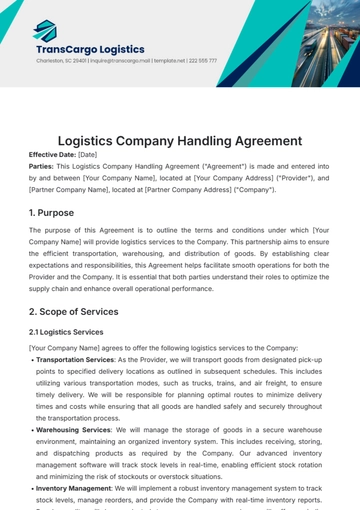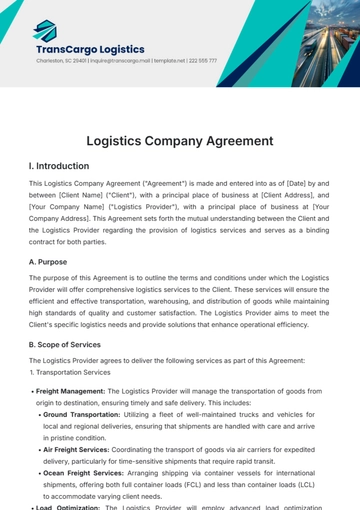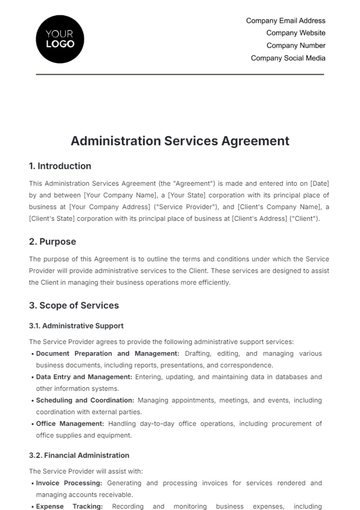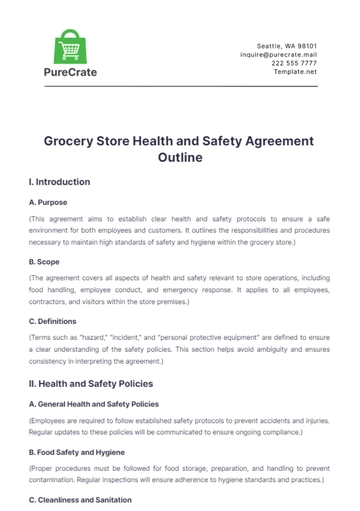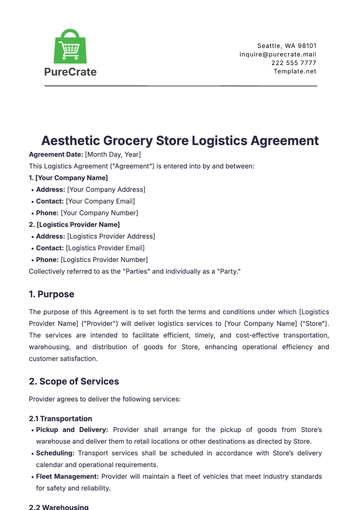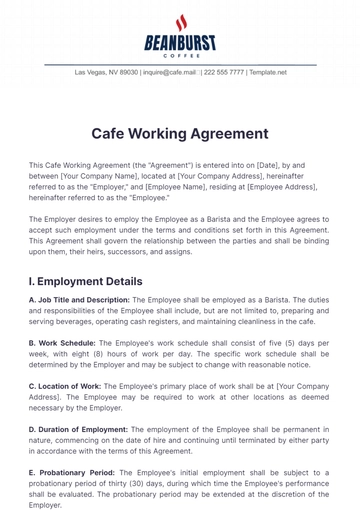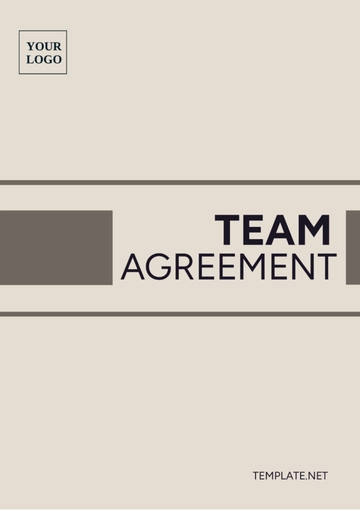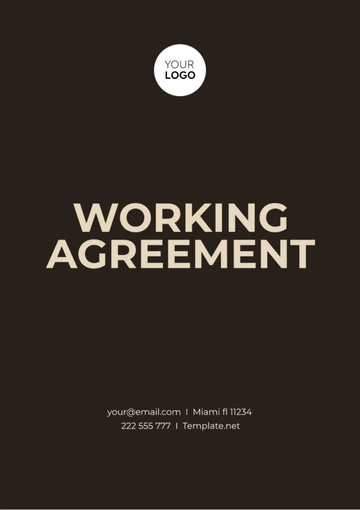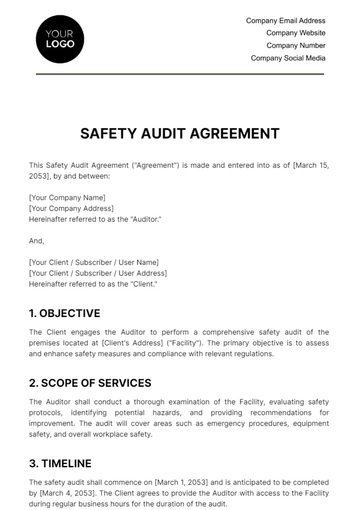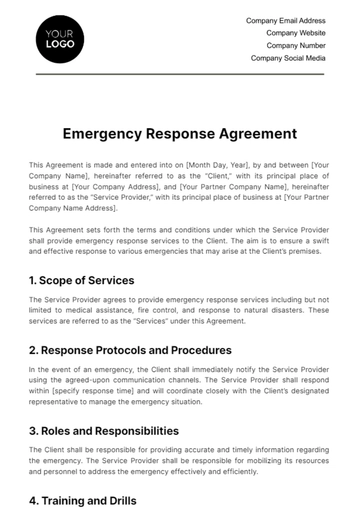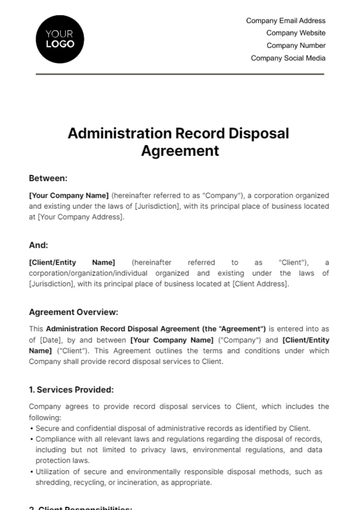Free Grocery Store Health and Safety Agreement Outline
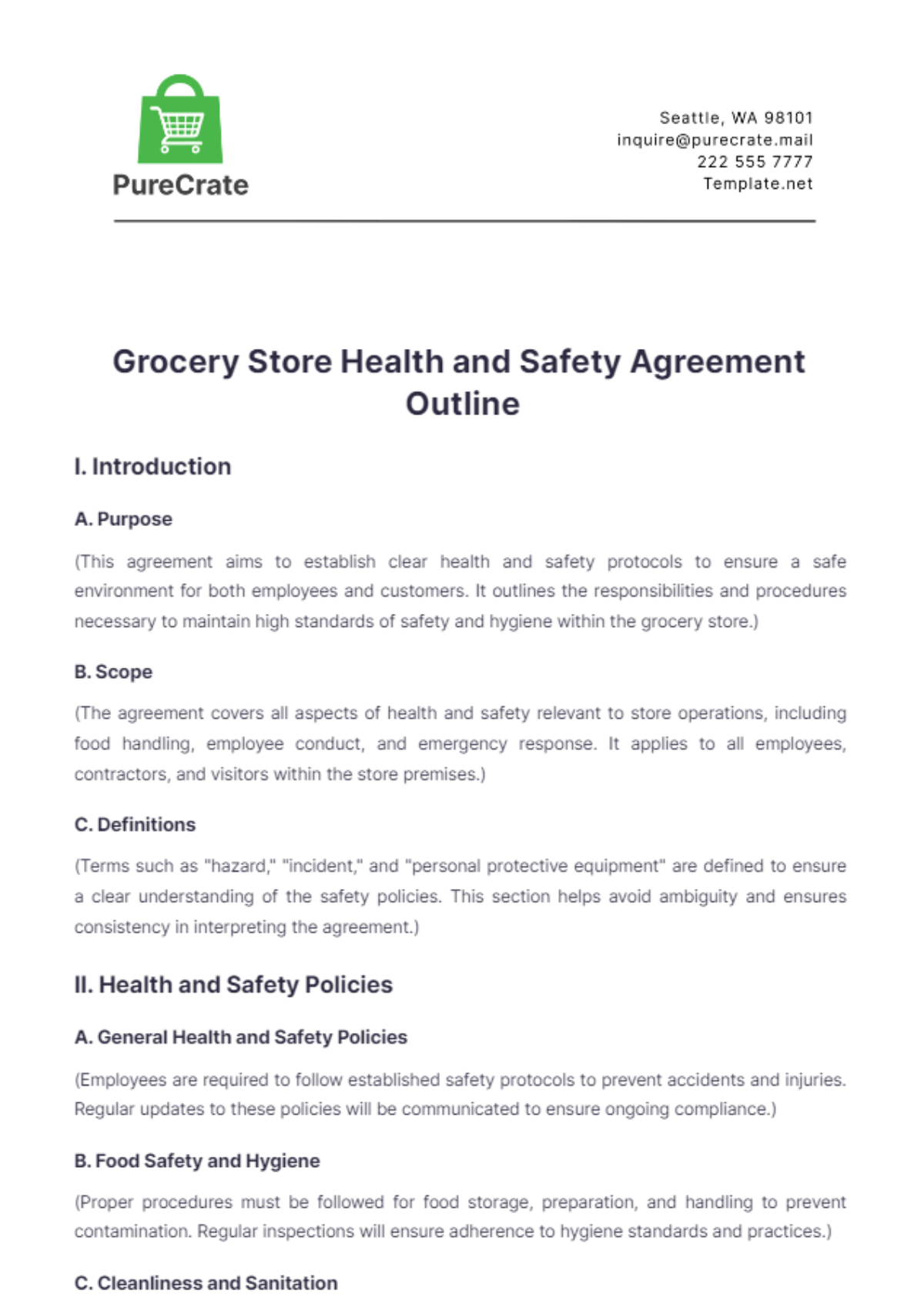
I. Introduction
A. Purpose
(This agreement aims to establish clear health and safety protocols to ensure a safe environment for both employees and customers. It outlines the responsibilities and procedures necessary to maintain high standards of safety and hygiene within the grocery store.)
B. Scope
(The agreement covers all aspects of health and safety relevant to store operations, including food handling, employee conduct, and emergency response. It applies to all employees, contractors, and visitors within the store premises.)
C. Definitions
(Terms such as "hazard," "incident," and "personal protective equipment" are defined to ensure a clear understanding of the safety policies. This section helps avoid ambiguity and ensures consistency in interpreting the agreement.)
II. Health and Safety Policies
A. General Health and Safety Policies
(Employees are required to follow established safety protocols to prevent accidents and injuries. Regular updates to these policies will be communicated to ensure ongoing compliance.)
B. Food Safety and Hygiene
(Proper procedures must be followed for food storage, preparation, and handling to prevent contamination. Regular inspections will ensure adherence to hygiene standards and practices.)
C. Cleanliness and Sanitation
(Daily cleaning schedules and procedures will be implemented to maintain a hygienic store environment. Special attention will be given to high-touch areas and food preparation surfaces.)
D. Hazard Communication
(Clear labeling and signage will be used to identify potential hazards within the store. Employees will be trained on how to recognize and report hazards effectively.)
III. Employee Responsibilities
A. Training and Education
(All employees must complete initial health and safety training before starting work. Ongoing training will be provided to address new hazards and changes in safety protocols.)
B. Safe Work Practices
(Employees are expected to adhere to safe work practices and use personal protective equipment as required. Compliance with safety procedures will be monitored and enforced.)
C. Reporting and Documentation
(Employees must promptly report any safety hazards, incidents, or injuries to their supervisor. Accurate documentation of reports will be maintained for review and follow-up actions.)
IV. Customer Safety
A. Store Layout and Design
(The store layout will be designed to minimize tripping hazards and ensure clear pathways. Regular reviews of the layout will be conducted to address any potential safety issues.)
B. Safety Signage
(Appropriate signage will be displayed to warn customers of potential hazards, such as wet floors or low shelves. Signage will be regularly checked and updated as needed.)
C. Customer Interaction
(Employees will be trained to handle customer interactions safely and address any safety concerns promptly. Procedures will be in place to assist customers in case of emergencies or accidents.)
V. Emergency Procedures
A. Emergency Response Plan
(The store will have a detailed emergency response plan for incidents such as fires, medical emergencies, or natural disasters. Employees will be trained on their roles and responsibilities in an emergency.)
B. Evacuation Procedures
(Clearly marked evacuation routes and exits will be provided to ensure a safe and orderly evacuation. Regular evacuation drills will be conducted to familiarize employees with the procedures.)
C. First Aid and Medical Response
(First aid kits will be readily available, and designated employees will be trained in basic first aid and CPR. Procedures for contacting medical assistance will be clearly outlined and communicated.)
VI. Compliance with Regulations
A. Local and State Regulations
(The store will comply with all local and state health and safety regulations, including those related to food safety and workplace safety. Regular reviews will ensure ongoing compliance.)
B. Federal Regulations
(Adherence to federal regulations, such as OSHA standards, will be maintained to ensure a safe work environment. Updates to federal regulations will be incorporated into the store's safety practices.)
C. Inspections and Audits
(Regular internal and external inspections will be conducted to assess compliance with health and safety standards. Findings from inspections will be addressed promptly to correct any issues.)
VII. Training and Education
A. Initial Training
(New employees will undergo comprehensive initial training covering all aspects of health and safety. Training will include both classroom instruction and hands-on practice.)
B. Ongoing Training
(Continuous education will be provided through workshops, refresher courses, and updates on new safety procedures. Training records will be maintained to track employee participation.)
C. Documentation
(Records of all training activities, including attendance and content covered, will be documented. These records will be reviewed periodically to ensure compliance with training requirements.)
VIII. Incident Reporting and Management
A. Incident Reporting Procedures
(A clear procedure for reporting accidents, injuries, and near-misses will be established. Employees will be instructed on how to complete incident reports and whom to notify.)
B. Investigation and Follow-Up
(All reported incidents will be investigated to determine the cause and prevent recurrence. Follow-up actions will include implementing corrective measures and reviewing incident trends.)
C. Documentation and Record Keeping
(Detailed records of all incidents, investigations, and corrective actions will be maintained. These records will be reviewed regularly to ensure compliance and identify areas for improvement.)
IX. Agreement Review and Updates
A. Review Schedule
(The agreement will be reviewed at least annually to ensure it remains current and effective. Reviews will also be triggered by significant changes in store operations or regulations.)
B. Revision Process
(Any revisions to the agreement will be made through a structured process involving management and health and safety professionals. Changes will be communicated to all employees and incorporated into training.)
C. Approval and Implementation
(Final approval of the agreement will be obtained from store management. Once approved, the updated agreement will be implemented, and all employees will be informed of the changes.)
X. Signatures and Acknowledgments
A. Employee Acknowledgment
(Employees will sign an acknowledgment form indicating that they have received, read, and understood the health and safety agreement. This acknowledgment will be kept on file.)
B. Management Approval
(Store management will sign the agreement to confirm their commitment to enforcing the health and safety policies. This signature also signifies that the agreement has been reviewed and approved.)
- 100% Customizable, free editor
- Access 1 Million+ Templates, photo’s & graphics
- Download or share as a template
- Click and replace photos, graphics, text, backgrounds
- Resize, crop, AI write & more
- Access advanced editor
Ensure your grocery store's safety with the Grocery Store Health and Safety Agreement Outline Template from Template.net. This editable and customizable template is designed to meet your specific needs, streamlining your safety protocol documentation. With our AI Editor Tool, you can effortlessly tailor the agreement to comply with regulations and enhance workplace safety.
You may also like
- Lease Agreement
- Non Compete Agreement
- Rental Agreement
- Prenuptial Agreement
- Non Disclosure Agreement
- Operating Agreement
- Hold Harmless Agreement
- LLC Operating Agreement
- Arbitration Agreement
- Purchase Agreement
- Residential Lease Agreement
- Executive Agreement
- Confidentiality Agreement
- Contractor Agreement
- Partnership Agreement
- Postnuptial Agreement
- Collective Bargaining Agreement
- Loan Agreement
- Roommate Agreement
- Commercial Lease Agreement
- Separation Agreement
- Cohabitation Agreement
- Room Rental Agreement
- Child Custody Agreement
- Employee Agreement
- License Agreements
- Settlement Agreement
- Joint Venture Agreement
- Indemnity Agreement
- Subordination Agreement
- Sales Agreement
- Agreements Between Two Parties
- Business Agreement
- Real Estate Agreement
- HR Agreement
- Service Agreement
- Property Agreement
- Agreement Letter
- Restaurant Agreement
- Construction Agreement
- Finance Agreement
- Marketing Agreement
- Payment Agreement
- Investment Agreement
- Management Agreement
- Nonprofit Agreement
- Software Agreement
- Startup Agreement
- Agency Agreement
- Copyright Agreement
- Collaboration Agreement
- Reseller Agreement
- Car Rental Agreement
- Cleaning Services Agreement
- Consultant Agreement
- Deed Agreement
- Car Agreement
- Equipment Agreement
- Shares Agreement
- Data Sharing Agreement
- Advertising Agreement
- School Agreement
- Franchise Agreement
- Event Agreement
- Travel Agency Agreement
- Vehicle Agreement
- Board Resolution Agreement
- Land Agreement
- Binding Agreement
- Tenancy Agreement
- Exclusive Agreement
- Development Agreement
- Assignment Agreement
- Design Agreement
- Equity Agreement
- Mortgage Agreement
- Purchase and Sale Agreement
- Shareholder Agreement
- Vendor Agreement
- Royalty Agreement
- Vehicle Lease Agreement
- Hotel Agreement
- Tenant Agreement
- Artist Agreement
- Commission Agreement
- Consignment Agreement
- Debt Agreement
- Recruitment Agreement
- Training Agreement
- Transfer Agreement
- Apprenticeship Agreement
- IT and Software Agreement
- Referral Agreement
- Resolution Agreement
- Waiver Agreement
- Consent Agreement
- Partner Agreement
- Social Media Agreement
- Customer Agreement
- Credit Agreement
- Supply Agreement
- Agent Agreement
- Brand Agreement
- Law Firm Agreement
- Maintenance Agreement
- Mutual Agreement
- Retail Agreement
- Deposit Agreement
- Land Purchase Agreement
- Nursing Home Agreement
- Supplier Agreement
- Buy Sell Agreement
- Child Support Agreement
- Landlord Agreement
- Payment Plan Agreement
- Release Agreement
- Research Agreement
- Sponsorship Agreement
- Buyout Agreement
- Equipment Rental Agreement
- Farm Agreement
- Manufacturing Agreement
- Strategic Agreement
- Termination of Lease Agreement
- Compliance Agreement
- Family Agreement
- Interior Design Agreement
- Ownership Agreement
- Residential Lease Agreement
- Retainer Agreement
- Trade Agreement
- University Agreement
- Broker Agreement
- Dissolution Agreement
- Funding Agreement
- Hosting Agreement
- Investor Agreement
- Memorandum of Agreement
- Advisory Agreement
- Affiliate Agreement
- Freelancer Agreement
- Grant Agreement
- Master Service Agreement
- Parking Agreement
- Subscription Agreement
- Trust Agreement
- Cancellation Agreement
- Horse Agreement
- Influencer Agreement
- Membership Agreement
- Vacation Rental Agreement
- Wholesale Agreement
- Author Agreement
- Distributor Agreement
- Exchange Agreement
- Food Agreement
- Guarantee Agreement
- Installment Agreement
- Internship Agreement
- Music Agreement
- Severance Agreement
- Software Development Agreement
- Storage Agreement
- Facility Agreement
- Intercompany Agreement
- Lending Agreement
- Lodger Agreement
- Outsourcing Services Agreement
- Usage Agreement
- Assurance Agreement
- Photography Agreement
- Profit Sharing Agreement
- Relationship Agreement
- Rent To Own Agreement
- Repayment Agreement
- Volunteer Agreement
- Co Parenting Agreement
- HVAC Agreement
- Lawn Care Agreement
- SAAS Agreement
- Work from Home Agreement
- Coaching Agreement
- Protection Agreement
- Security Agreement
- Repair Agreement
- Agreements License
